Not all birds migrate south for the winter. In fact, many are perfectly comfortable braving the cold temperatures. Although we might not see them as often, many birds remain up north all winter long. It might be surprising for some that these tiny little animals are able to withstand such harsh conditions, but to them, this is commonplace. Today, we’ll discuss 10 of the most common birds that spend their winters in New York State.
1. Cardinals
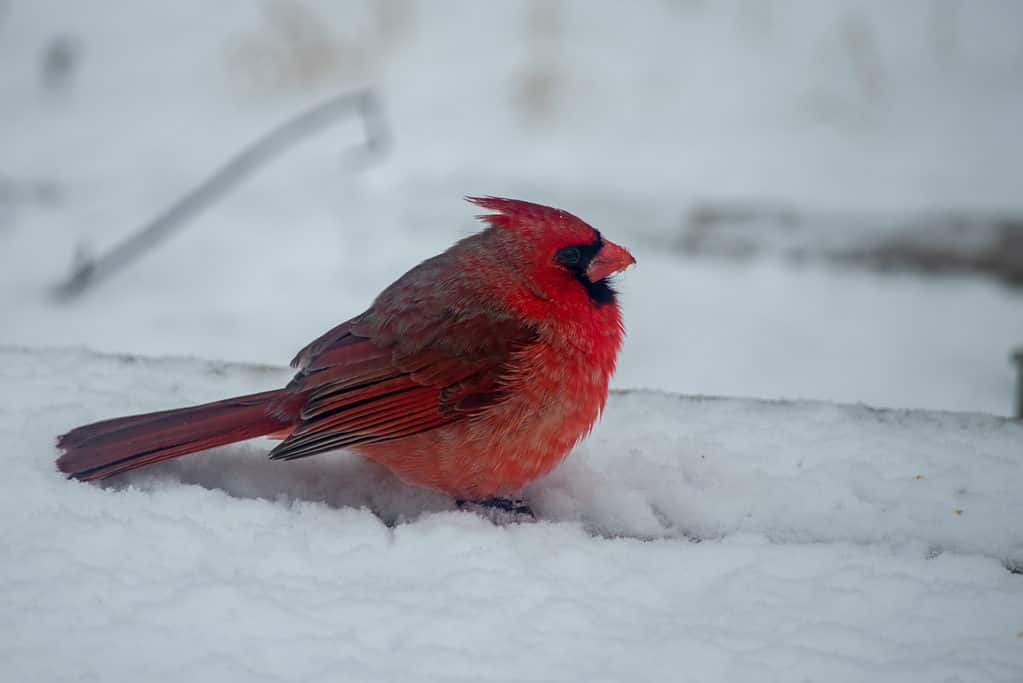
Male cardinals are the ones with bright red coloration. Females are a more toned-down, brownish hue.
©iStock.com/Diane079F
Have you ever seen a bright red bird flitting about in the snow? If so, it was likely a cardinal that came to pay you a visit. For many, these birds stand as symbols of resilience, perseverance, and strength due to the fact that they routinely brave the harsh northern winters. This is why it’s so important to make sure your bird feeder is stocked during the cold winter months. It’s always good to send them off with a snack before they leave as food gets harder and harder to find as the temperatures drop.
2. Blue Jays
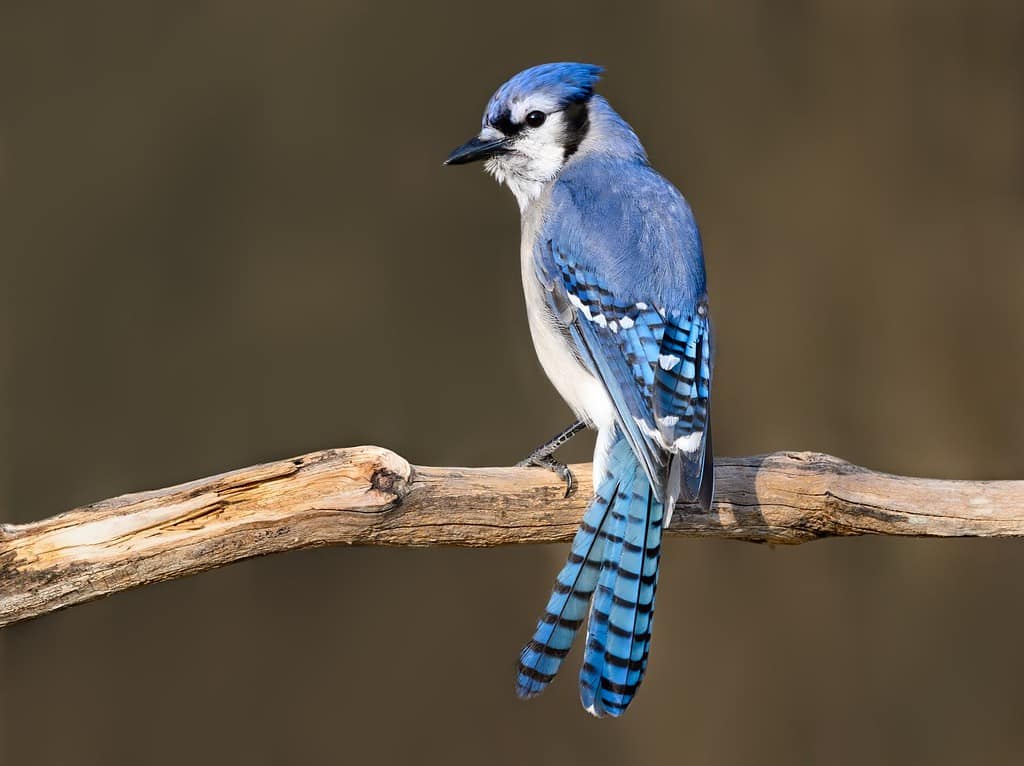
On average, blue jays will live to be roughly seven years old.
©FotoRequest/Shutterstock.com
Much like the cardinal, it’s very hard to miss a visit from a blue jay due to their striking color. Although some blue jays do migrate south for the winter, many choose to remain in New York State all year long. According to Wild Adirondacks, “Although some jays migrate to the southern portions of their breeding range every year, the proportion that migrates is probably below 20% of the population, even in the northern parts of its range. Young jays are more likely to migrate than their adult counterparts.”
3. American Crow
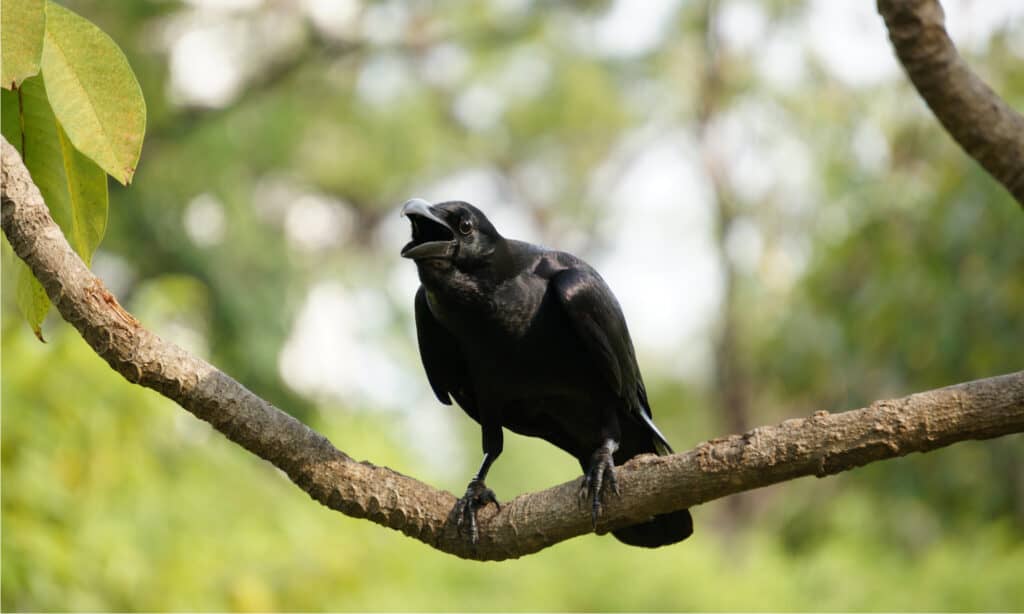
Crows are incredibly resourceful and intelligent, which gives them high survivability and adaptability.
©Tomorrow36/Shutterstock.com
It may come as no surprise that crows are year-long residents of New York State. Some crows that are native to more northern territories such as Maine and Canada may migrate south, but for the most part, New York native crows tend to stay put. These hardy birds are in part able to withstand the northern winters due to their intelligence, social living, and most importantly, their diverse diet. Crows feed on nearly everything, from fruits, nuts, and seeds all the way to garbage and dead animals.
4. American Tree Sparrow
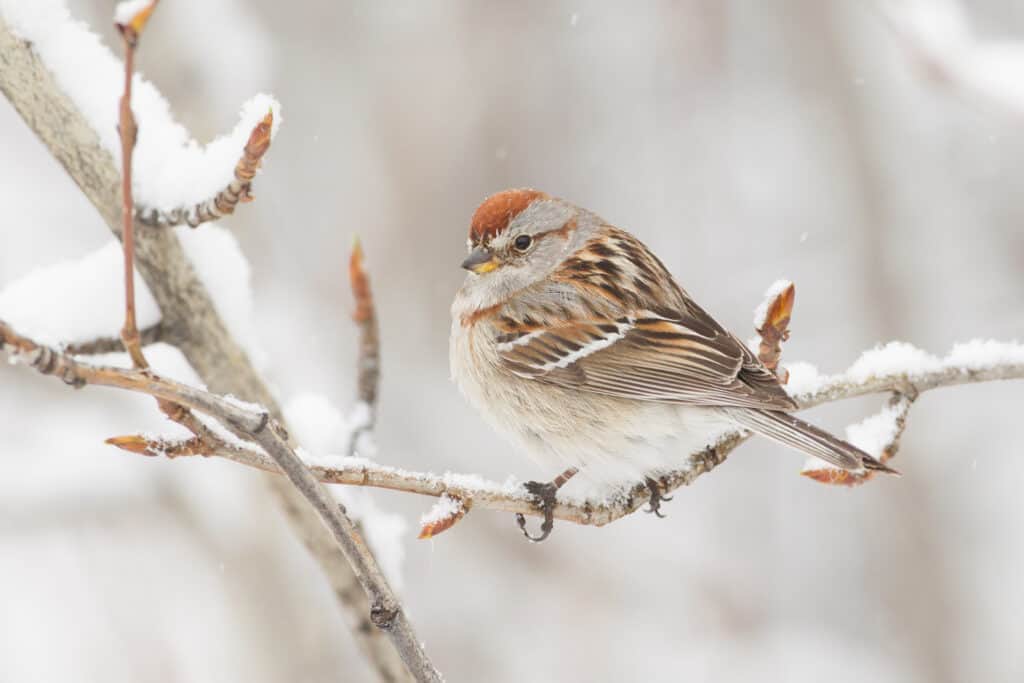
American tree sparrows have a varied diet which consists of seeds, fruits, and small insects.
©Jukka Jantunen/Shutterstock.com
If you’re an avid bird watcher, winter might just be the best time to catch a glimpse of these tiny creatures. These birds like to travel in groups, and many can be seen foraging around and searching for seeds with one another. American tree sparrows are easy to spot against a white, snowy background due to their large flocks.
5. Canada Goose
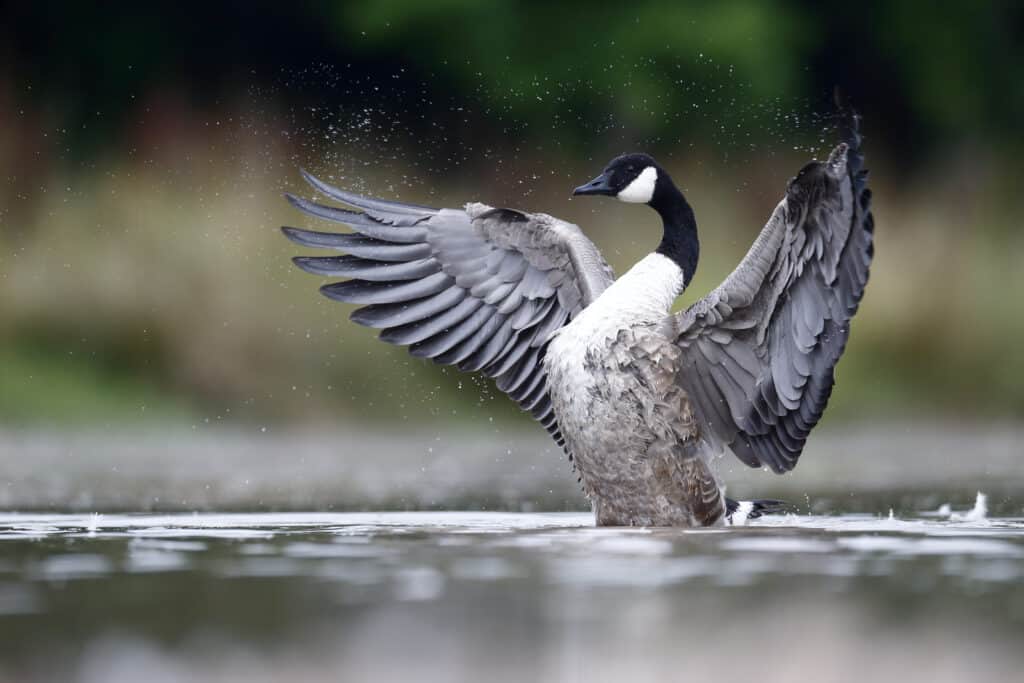
When geese flap their wings, it’s often a display of aggression.
©Erni/Shutterstock.com
We’ve likely all seen Canada geese flying through the sky in their iconic V-shape. However, many of these birds choose to stay in New York during the colder months. During this time, the Canada goose can be seen feeding on foods like corn and wheat that are calorie dense. This helps them bulk up and gives them extra energy to make it through times of food scarcity.
6. Barred Owl
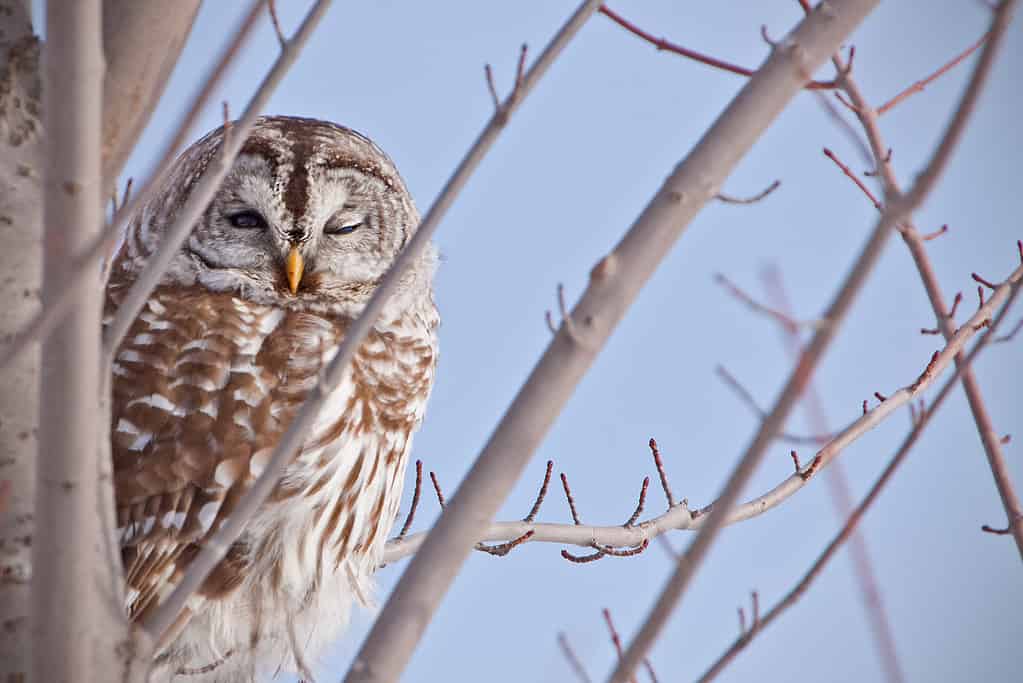
The
barred owl
is not strictly a nocturnal predator. You may catch a glimpse of one during the day.
©Alannyiri/ CC BY-SA 3.0 – License
The barred owl is no stranger to the cold. Although these owls are accustomed to wintery conditions, they wouldn’t be able to survive without being highly skilled hunters. Their sharp eyesight, excellent hearing, and silent flight make them formidable wintertime predators. Compared to other non-migratory birds, owls are quite a regular sight. However, their populations tend to thin out the closer you get to urban areas, such as New York City. Your best chance at spotting one this winter is out in the countryside.
7. Downy Woodpecker
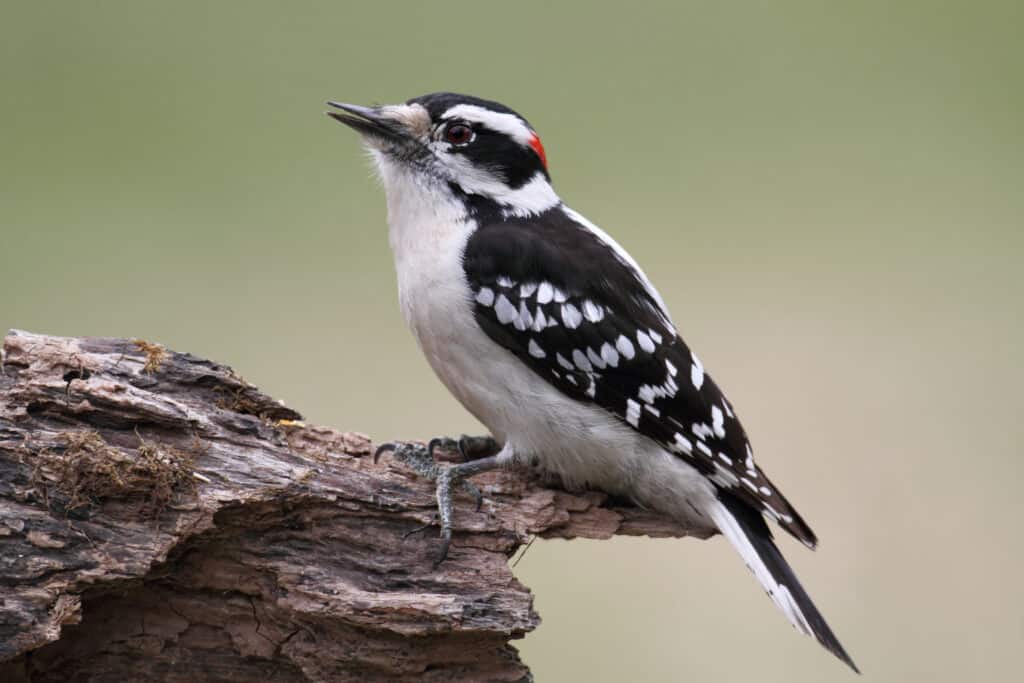
Only male downy woodpeckers have a red patch on the back of their head. On females, this spot is black.
©Steve Byland/Shutterstock.com
Downy woodpeckers are not only one of the smallest species of woodpecker, but they’re also one of the most abundant in North America! These birds are commonly seen tapping away at their trees all throughout the winter months. However, during this time, their diet changes from insects and berries to seeds and branches. Adorably enough, downy woodpeckers are known to share their burrows with other birds during the cold winter months.
8. Black-Capped Chickadee
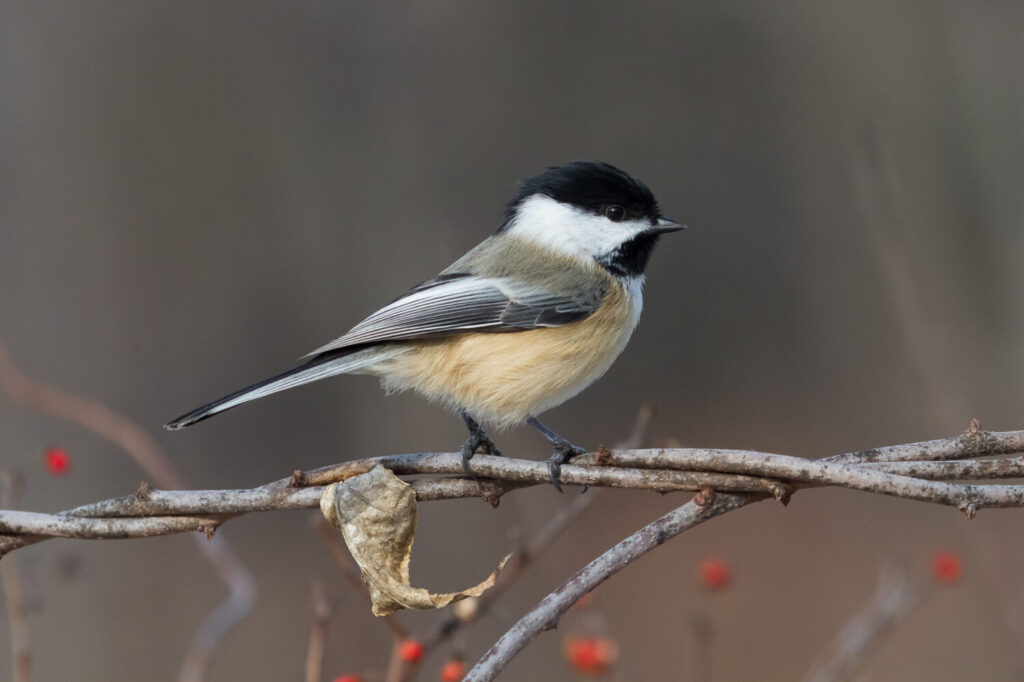
Black-capped chickadees have a lifespan of roughly two years.
©Paul Roedding/Shutterstock.com
Like every other bird on this list, the black-capped chickadee wouldn’t be able to survive the cold without their particular set of skills. However, they are completely unique in that they will voluntarily enter a state of hypothermia in order to get through the most bitter of temperatures. According to Kristi Sullivan, during the night, these birds will drop their body temperature roughly 20 degrees lower than their typical levels. This helps them to conserve energy, which is precious during food-insecure times.
9. Barn Owl
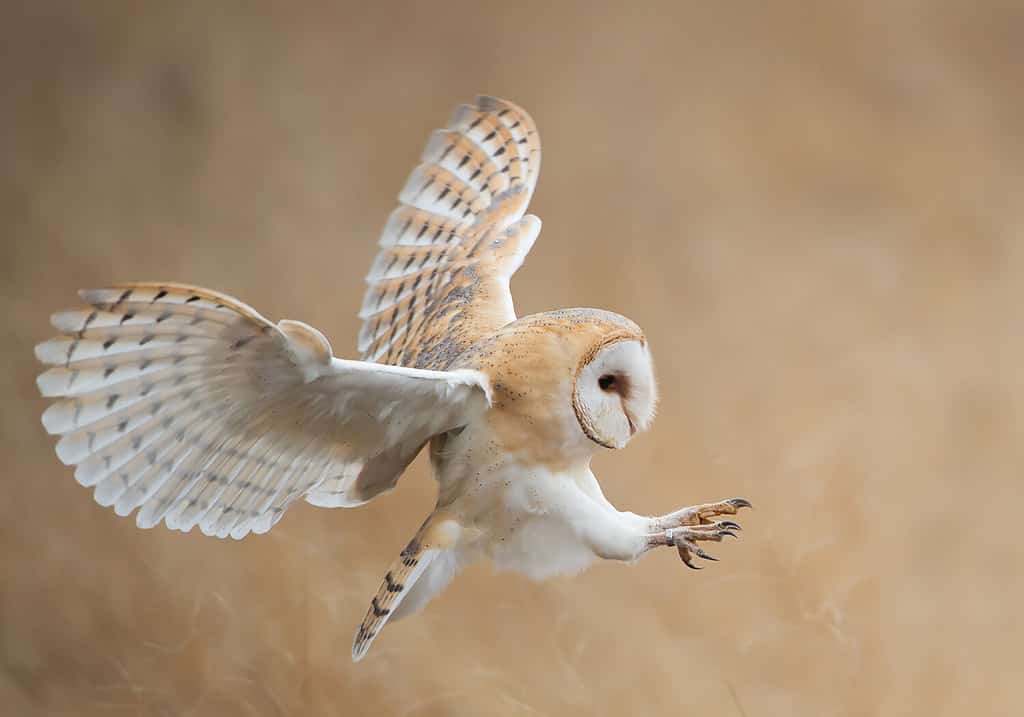
Barn owls have incredibly sharp senses.
©MZPHOTO.CZ/Shutterstock.com
Barn owls are present in New York all year round, but if you want to catch a glimpse of one, winter is the best time to do so. The barn owl hunts at night, which means that during the warmer months, people will typically be asleep during their hours of peak activity. However, when food is harder to come by during the winter, many barn owls will resort to daytime hunting to make up for their dietary deficit.
10. American Goldfinch
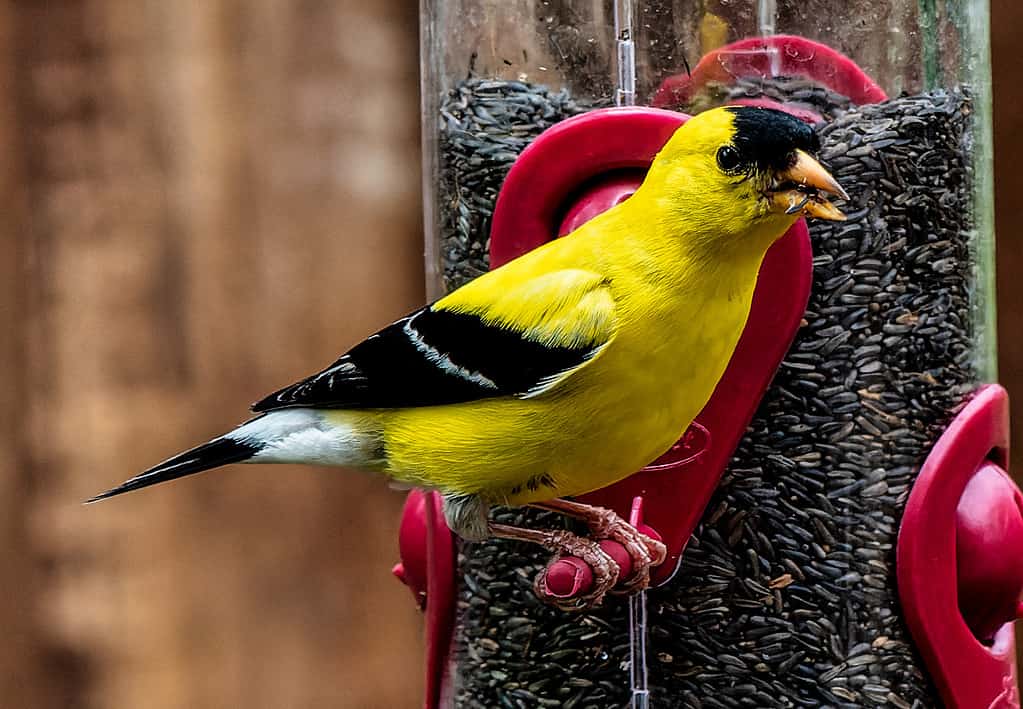
American goldfinches are sometimes called “wild canaries.”
©blightylad-infocus/iStock via Getty Images
Although some American goldfinches migrate south for the winter, a small population of them remain in New York state all year round. These bright yellow birds are quite easy to spot among a snowy landscape, much like cardinals and blue jays. However, these birds tend to burrow in order to survive the harsh conditions. Because of this, spotting one may not be as easy as some of the other birds on this list.
Because food is so scarce during this time of year, putting out birdseed is important during the winter. Many non-migratory birds will try to conserve their energy the best they can in order to make it through. Because of this, sprinkling a little birdseed on your back porch can make all the difference in their lives! if you don’t have one already, consider setting up a bird feeder in order to help these brave, tiny creatures along in their journey.
| Bird | Difficulty of Spotting One |
|---|---|
| Barn owl, barred owl | Somewhat difficult |
| Blue jay, American tree sparrow, black-capped chickadee, barred owl | Easy |
| American goldfinch, cardinal, downy woodpecker, Canada goose | Very easy |
The photo featured at the top of this post is © Mary Terriberry/Shutterstock.com
Thank you for reading! Have some feedback for us? Contact the AZ Animals editorial team.






